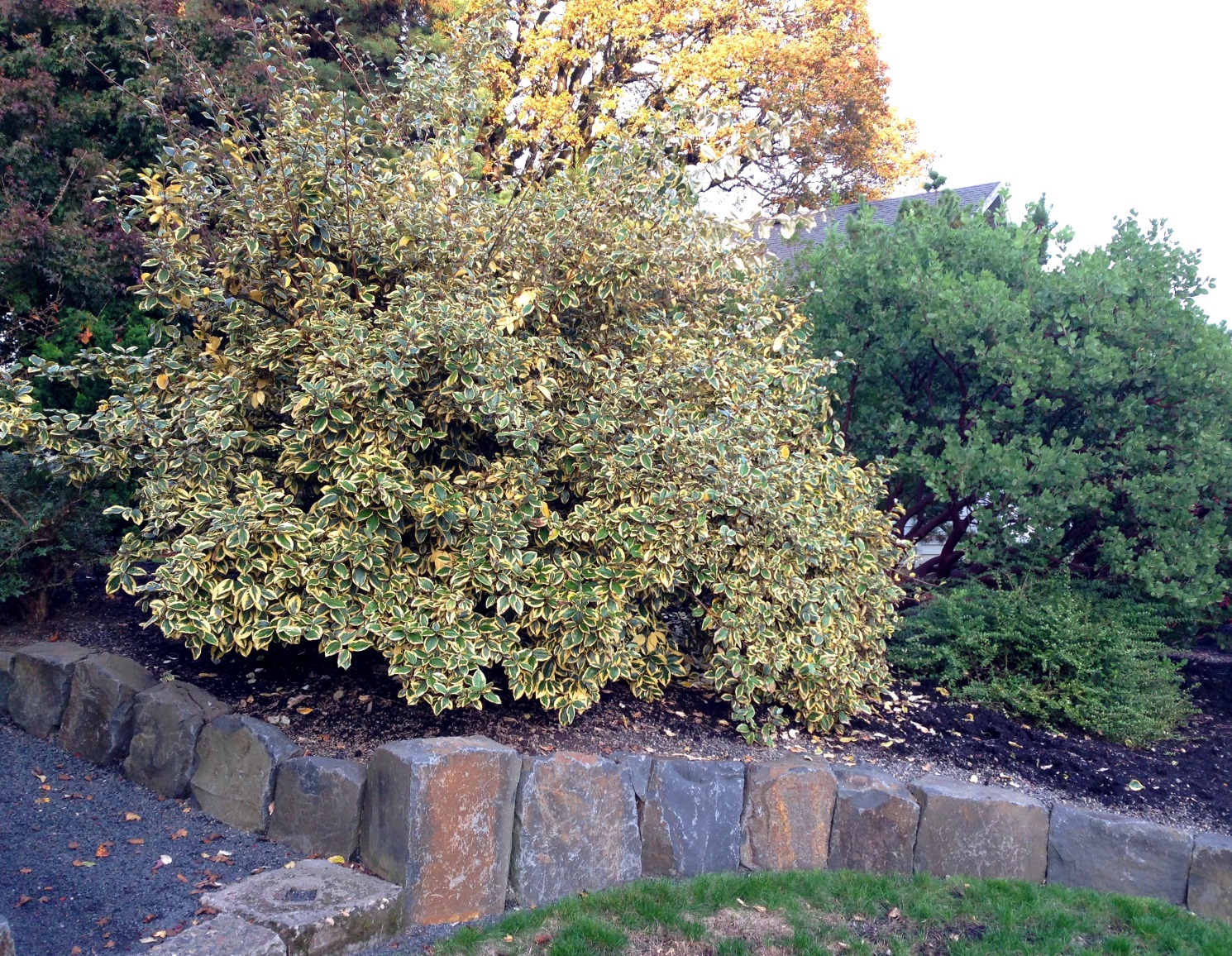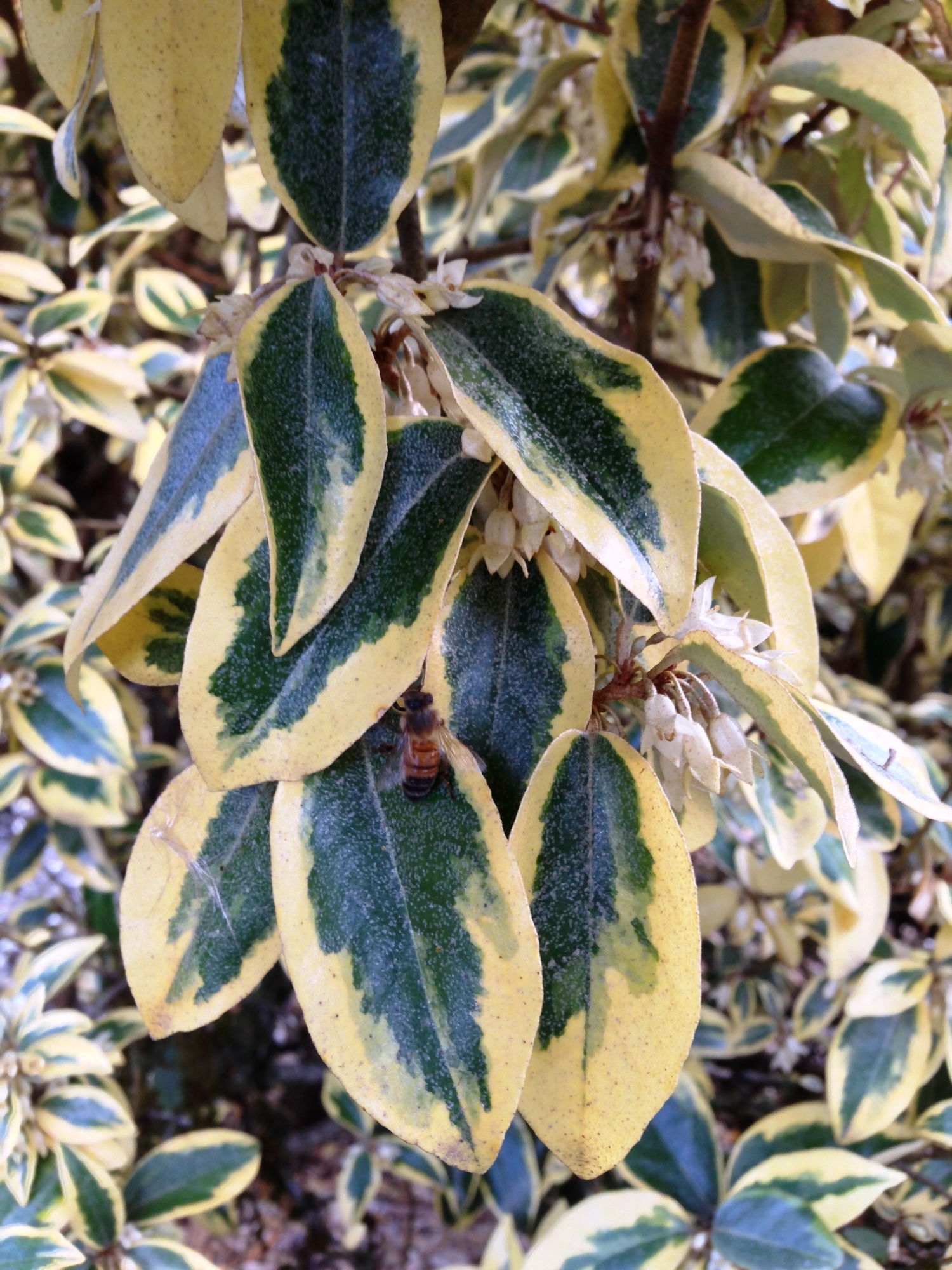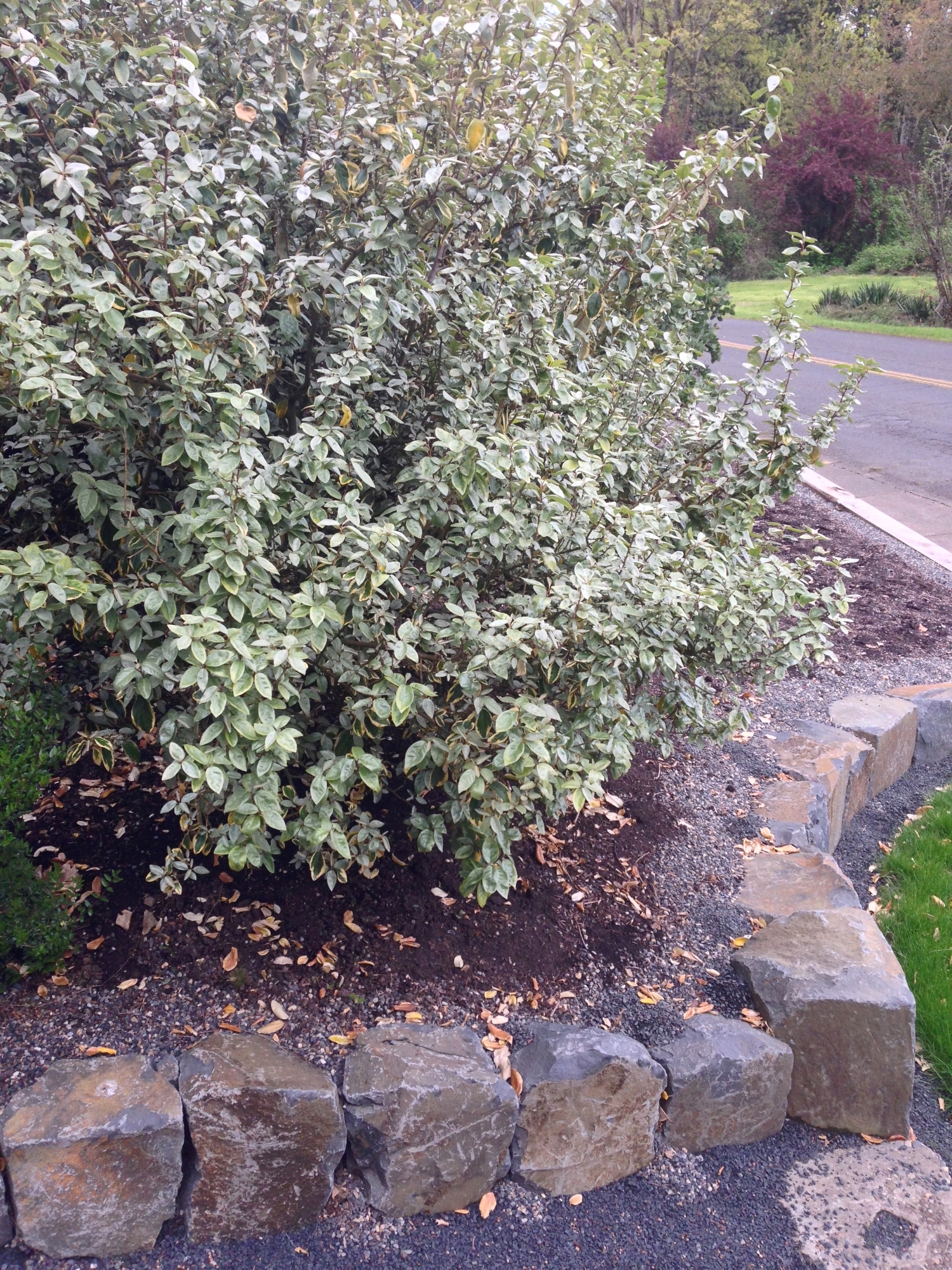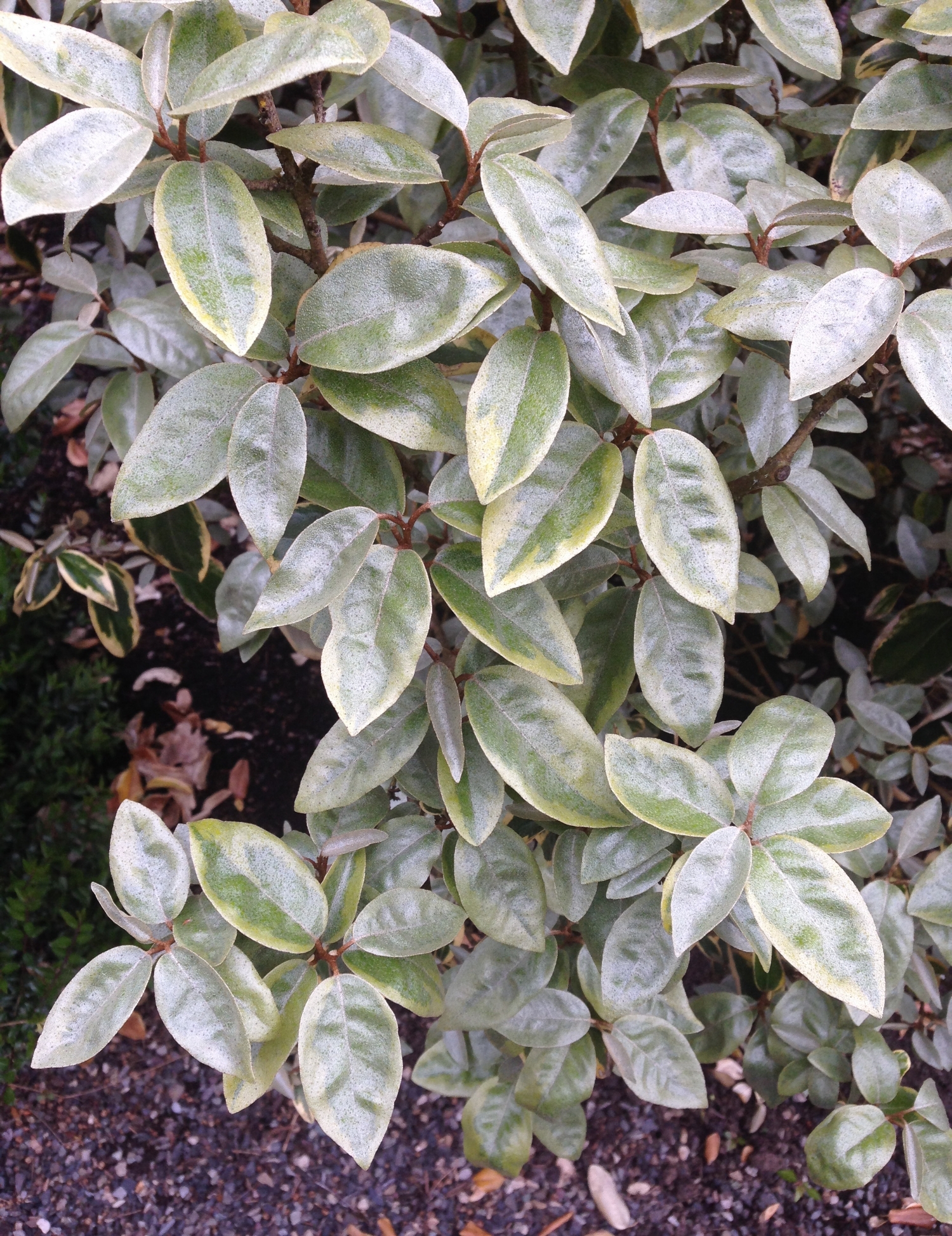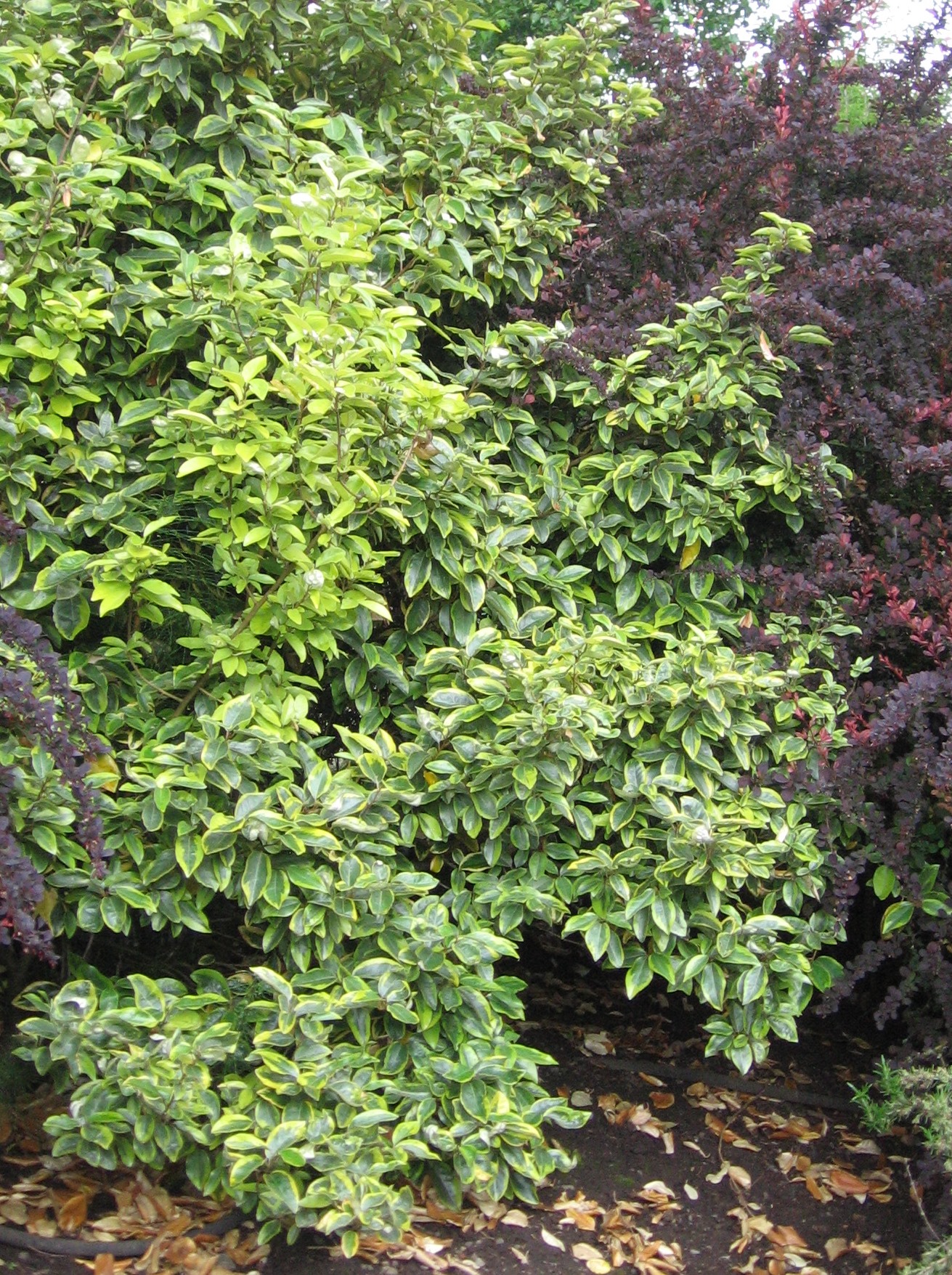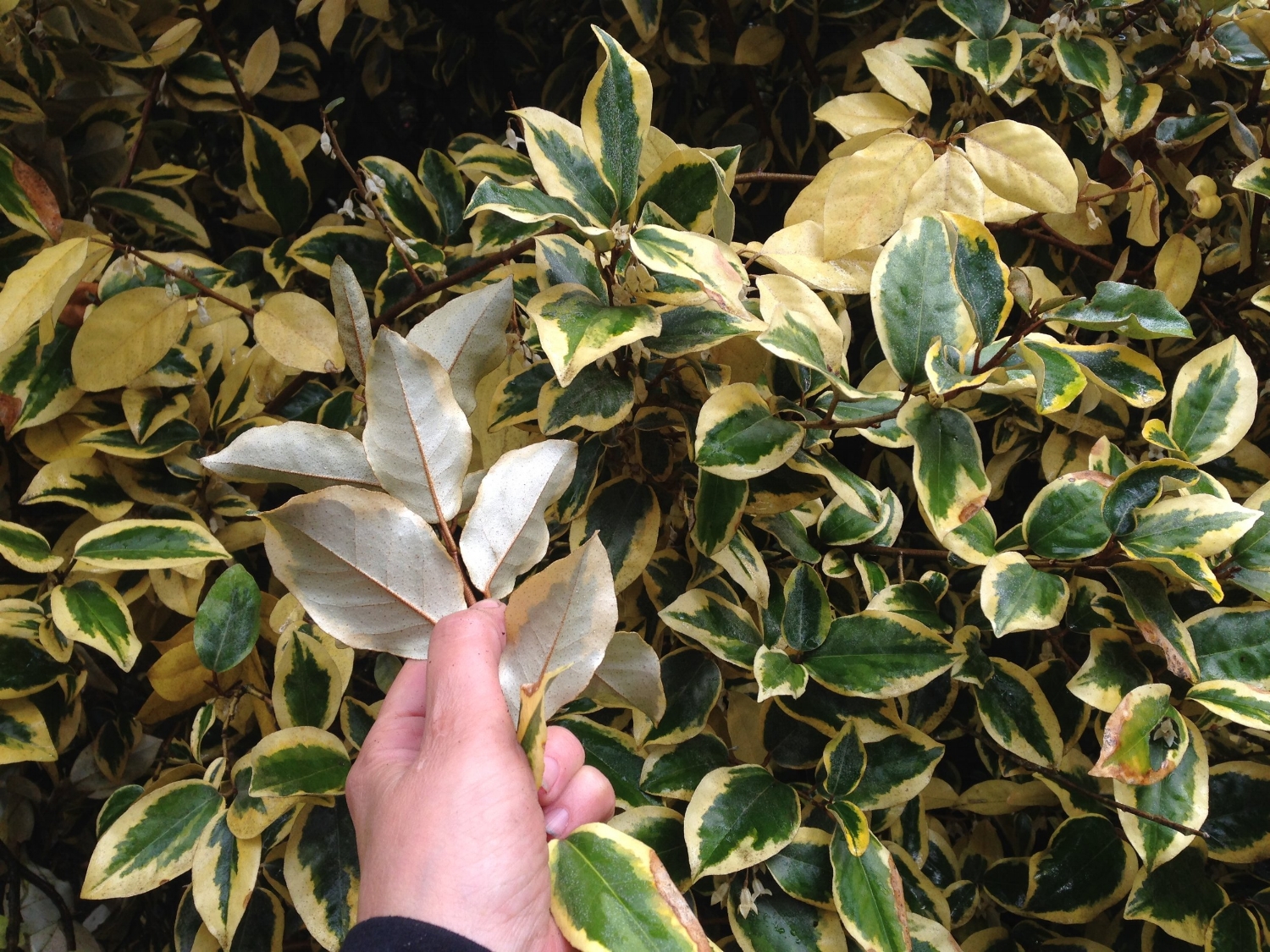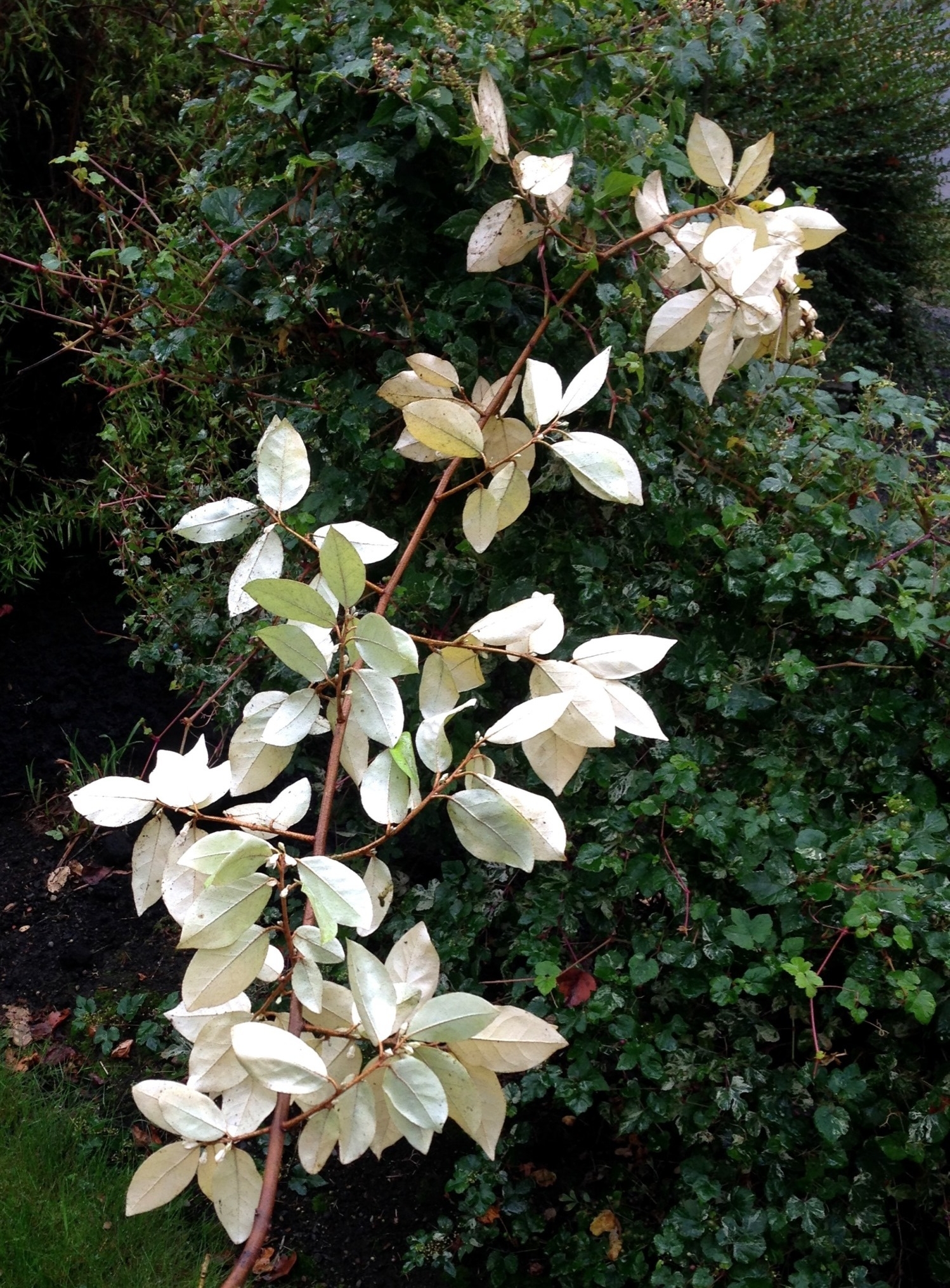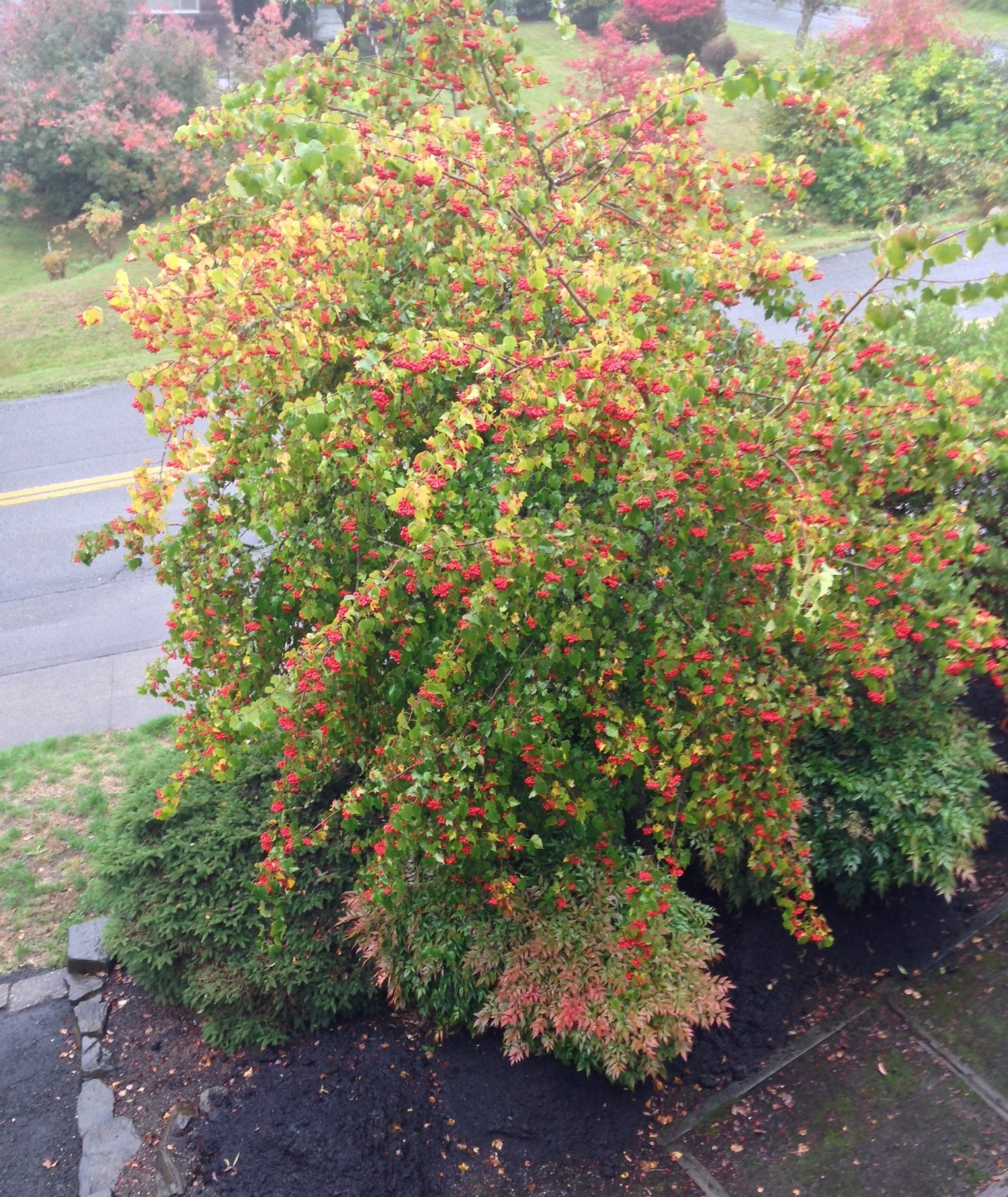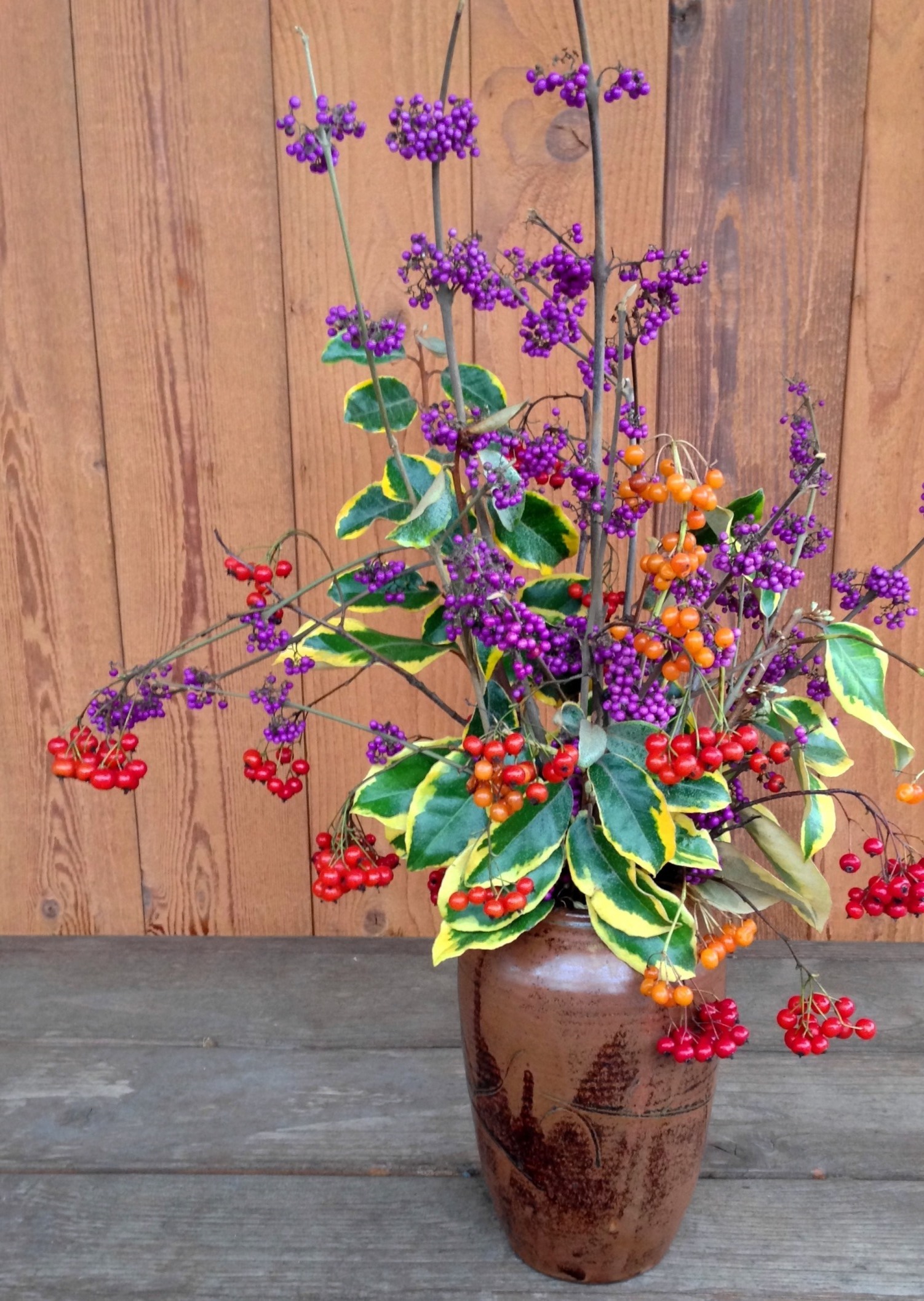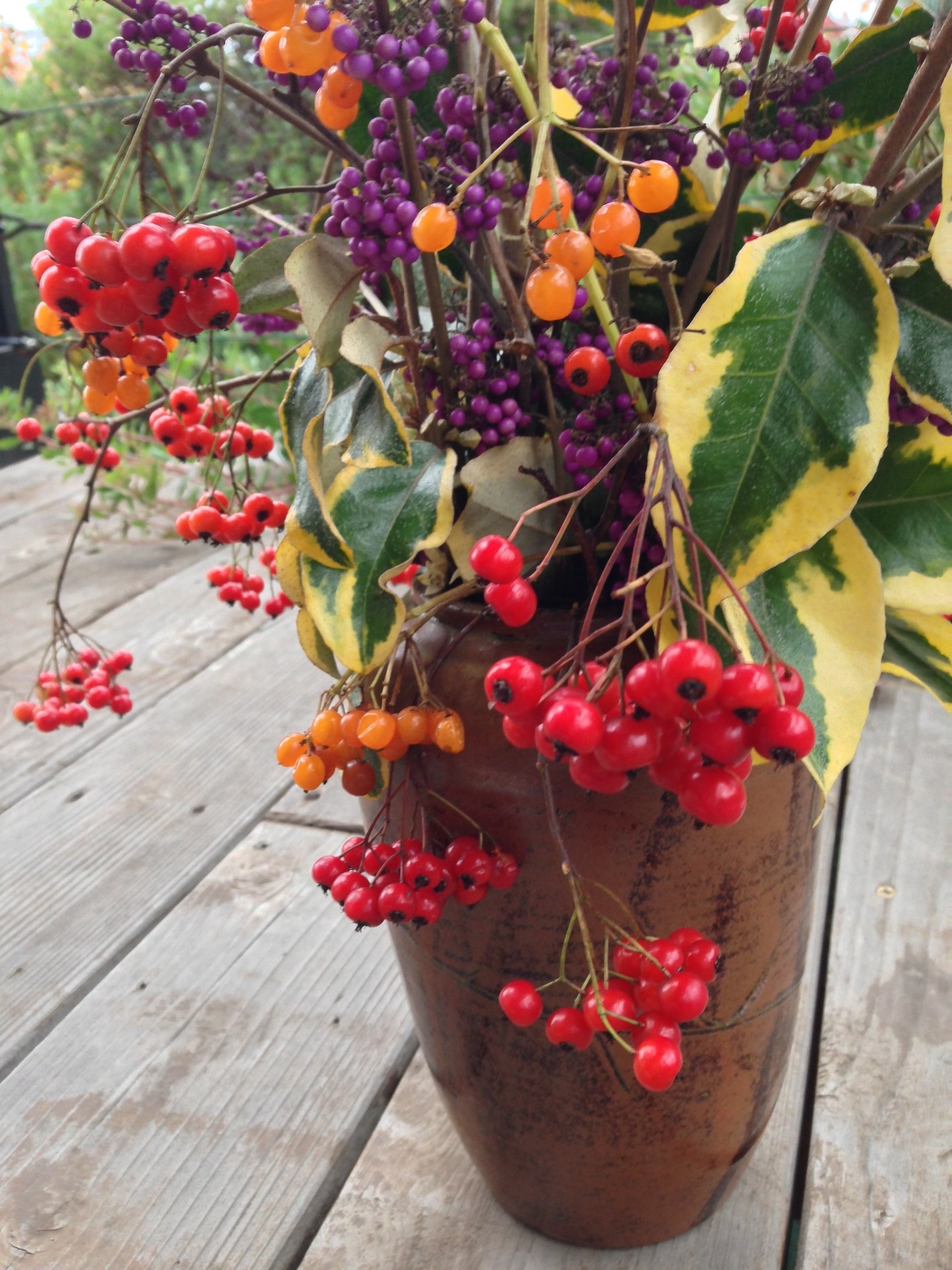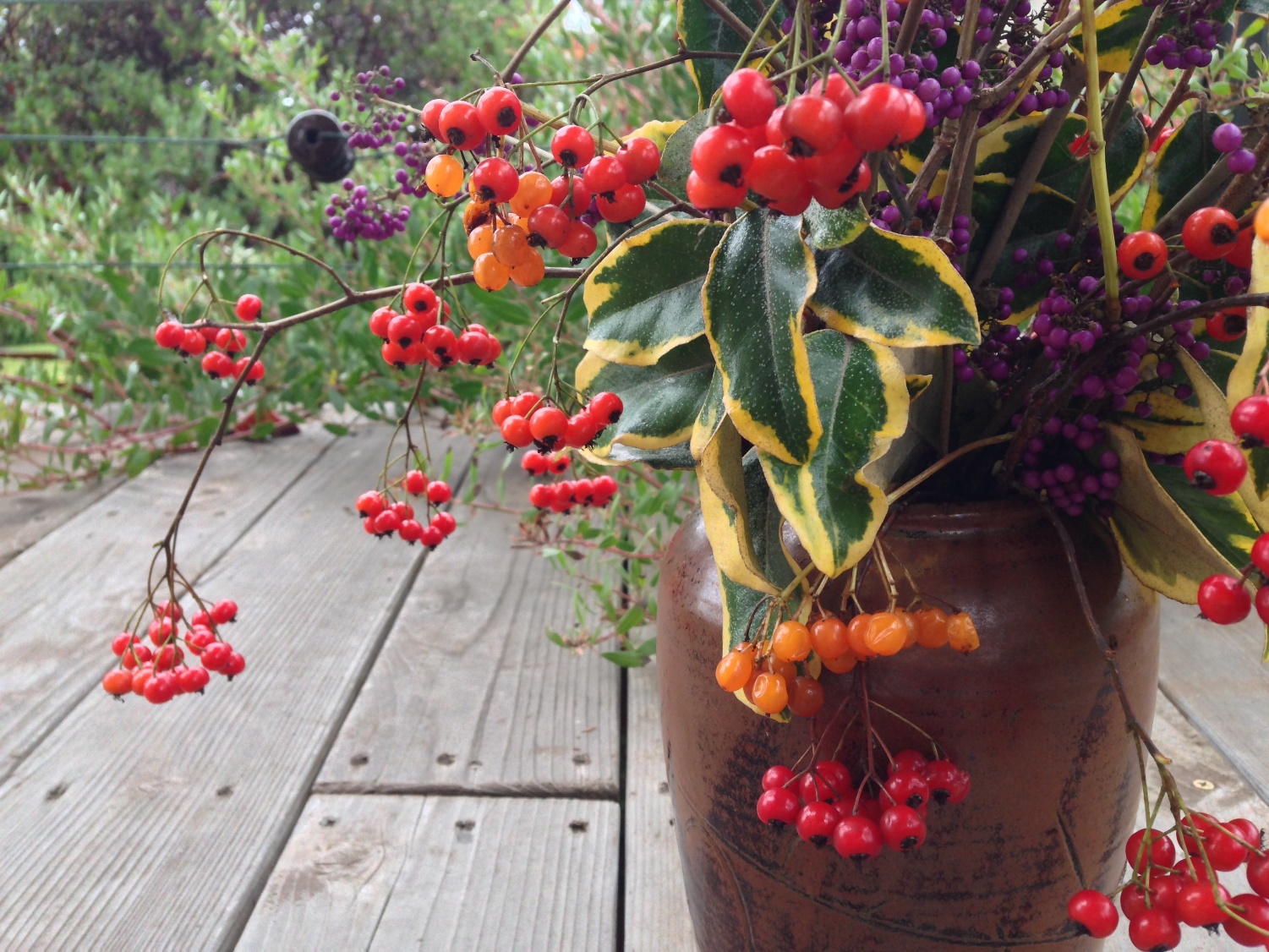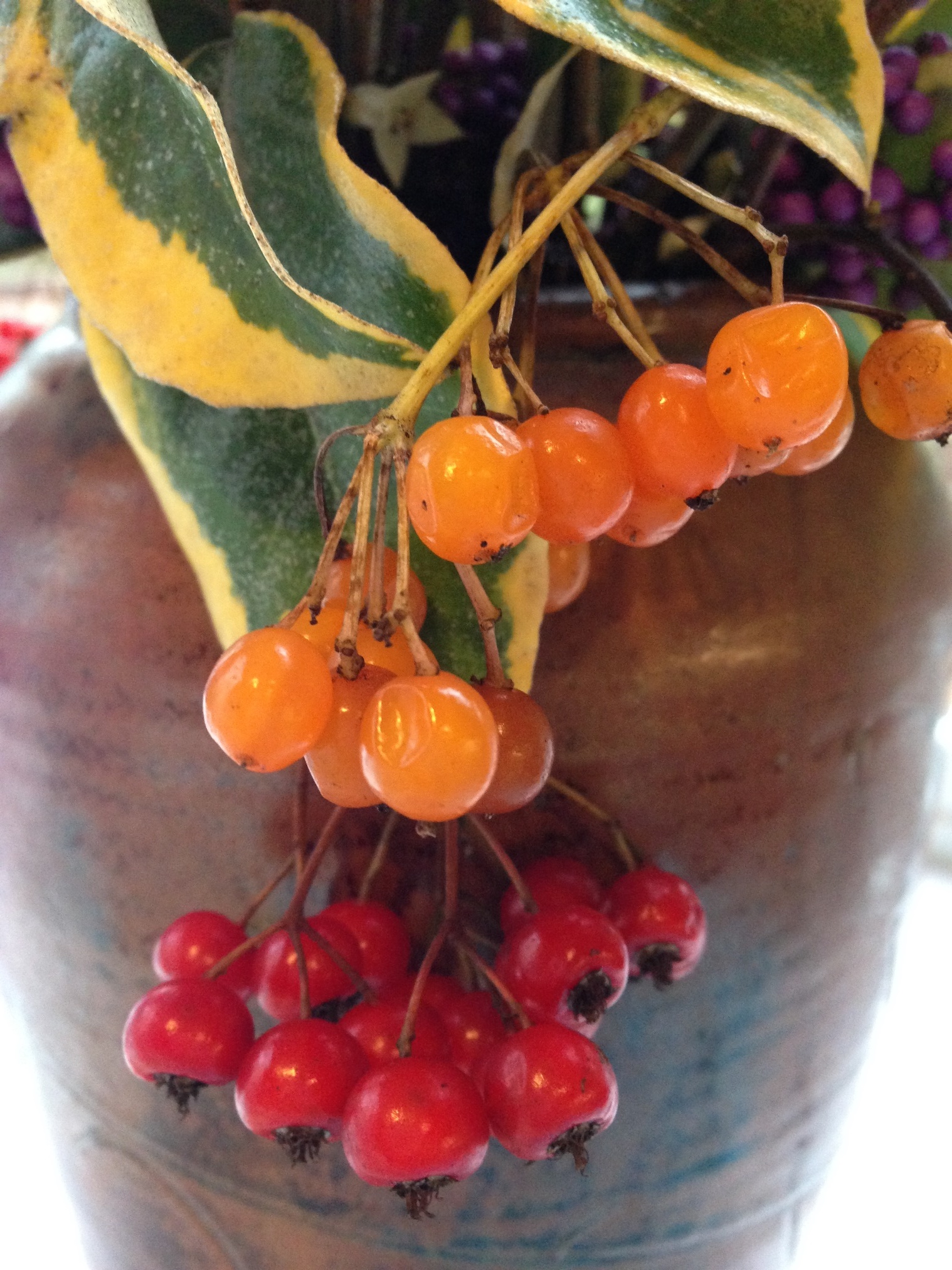Fall pruning rewards: Elaeagnus
/Plant profile: Gilt Edge Elaeagnus
"In A Vase Monday"
Our yard, southeast quadrant, part 3
Elaeagnus 'Gilt Edge' after pruning in Fall 2016.
One of my favorite things about pruning this area of the garden, in fall, is Elaeagnus ebbingei 'Gilt Edge', the Gilt Edge Silverberry.
One of many honeybees humming through this Elaeagnus 'Gilt Edge' in October.
It blooms in fall, and the tiny white flowers, so inconspicuous on the undersides of leaves, have a lovely fragrance. Sweet and spicy, it reminds me of somewhat of Dianthus. One inhale and my shoulders loosen, a deep exhale. Do garden chores of fall...aromatherapy for free!
If it weren't for the scent, which fills the lower garden, one might never know the flowers are there, except of course for the bees. (Photo above.) They are also quite happy recipients of the flowers that bloom at this unusual time.
Elaeagnus 'Gilt Edge' flower under leaves, Oct 2016.
The common name Silverberry partly refers to the silvery look of the new spring leaves. In the two photos below, taken in April, the new foliage emerges silvery gray/green. As the season progresses, it becomes it's typical gold and green.
Gilt Edge Silverberry, with silvery-gray new foliage in April.
Elaeagnus 'Gilt Edge' in April, with silvery-gray new growth. NOTE last season's foliage color behind the new leaves.
By May (photo below), the silvery color has calmed, and is beginning to show the hardened off color that's typical of the rest of the year.
Gilt Edge Silverberry in May.
Even though the top surface changes, the undersides of the leaves remain silver.
When I was pruning on my Gilt Edge this fall, the day was darkening and I was tossing the branches into a pile. I looked down and was shocked by how white all the undersides of the leaves were, every branch. They were glowing like ghosts.
Elaeagnus Gilt Edge, every leave is white beneath.
I had the idea to use the white branches in a vase, they were so pretty. But when I tried, arranging the branches with their downside out (the opposite of how they grew, or how they want to be) was hard to achieve in a vase. I will need to attempt that one on another day.
Here is my Gilt Edge, in younger days, with the winter red berries of two Washington Hawthorn trees (one of which succumbed to heavy ice damage a few winters back). There's also a variegated Ceanothus 'El Dorado' in this photo. Red berries look great with either of these yellow-variegated plants, but particularly striking with the Elaeagnus. It is a fantastic winter combination.
These two also look great together in a vase.
Crataegus phaenopyrum (Washington Hawthorn), Ceanothus 'El Dorado', and Elaeagnus ebbingei 'Gilt Edge', winter 2008.
For my first "In a Vase Monday" challenge (hosted by RamblingInTheGarden --thank you, Cathy, for the opportunity!), it started with the Elaeagnus spoils. And filled out with the Washington Hawthorn berries from this tree...
...and included the Beautyberry from last week's blog... plus some orange Viburnum opulus (or trilobum?) berries from another part of the yard.
Fall vase: warm compliments of red, orange and yellow, with some cool purple relief. All are fall prunings from my yard.
There are no leaves in the composition, other than the Elaeagnus...
...which highlights the luminous berries.
A note on the Elaeagnus: while it is a very useful evergreen, and I use it frequently in designs, it will get a little damage in our hardest winters in the Portland area, down to say 7-12 degrees F (this is from memory, not a note, so could be off a bit). The foliage will be damaged, but the plant will recover, and leaves will look new again by summer.
Note also it's size and give it room. It can reach 10-12' x 10-12'. I keep mine a little smaller with pruning, but mainly I just try to keep it neat (can look a little rangy without a nip here and there). I would not use it where I needed a formal hedge or very crisp look. But it is fantastic for toughness, drought tolerance, deer tolerance, and all-around healthy appearance. Handy in both sun and part shade.
To see what other bloggers have written for today's "In a Vase Monday," go to RamblingInTheGarden, and scroll through the comments (links from each poster are there).
Story and photography: © Alyse Lansing, all rights reserved.

